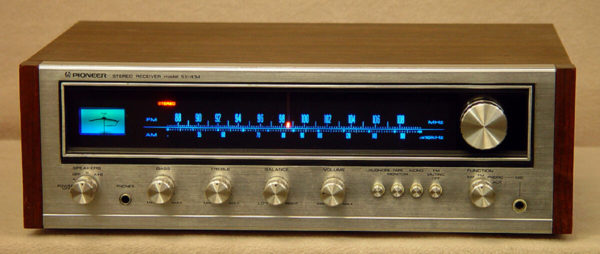The high cost performance receiver which supplied the state-of-the-art technology of those days to the tuner part and the Integrated-Amplifier part, and measured the improvement in a performance. *SOLD*
The two-step hardwired-connection type with exact RIAA deflection was used for the equalizer amplifier, and it has adopted the whole page hardwired-connection pure complimentary OCL scheme as a power amplifier part.
The tuner part serves as circuitry which adopted low noise FET and the triple variable condenser as FM front end and to which it adopted high-integrated IC and the ceramics filter as the IF section.
Moreover, FM muting switch which intercepts the unpleasant inter-office noise at the time of FM tuning is adopted.
A dial scale is a wide type and FM tick mark serves as a linear (regular intervals) scale.
It is also possible to sing by a mic mixing circuitry together with a record, a tapes, FM, and the special-NetWare-program source of AM broadcast.
The mixed signal is possible also for a sound recording on a tapes, and if the sound volume of the special-NetWare-program source is extracted to a min, it can be used also as mic amplifier.
The speaker termination is equipped with 2 sets, A and B. Moreover, it can use properly into four positions of A, B, A+B, and OFF by the change of a switchpoint.
Specifications
Tuning range: FM, MW
Power output: 15 watts per channel into 8Ω (stereo)
Frequency response: 30Hz to 25kHz
Total harmonic distortion: 0.8%
Damping factor: 25
Input sensitivity: 10mV (mic), 2.5mV (MM), 150mV (DIN), 150mV (line)
Signal to noise ratio: 65dB (mic), 70dB (MM), 90dB (line)
Output: 150mV (line), 30mV (DIN)
Speaker load impedance: 4Ω to 16Ω
Semiconductors: 1 x FET, 3 x IC, 27 x transistors, 13 x diodes
Dimensions: 430 x 140 x 347mm
Weight: 8.1kg
Accessories: FM T-type antenna
Year: 1974
| See also different: | Vintage Amplifiers |

